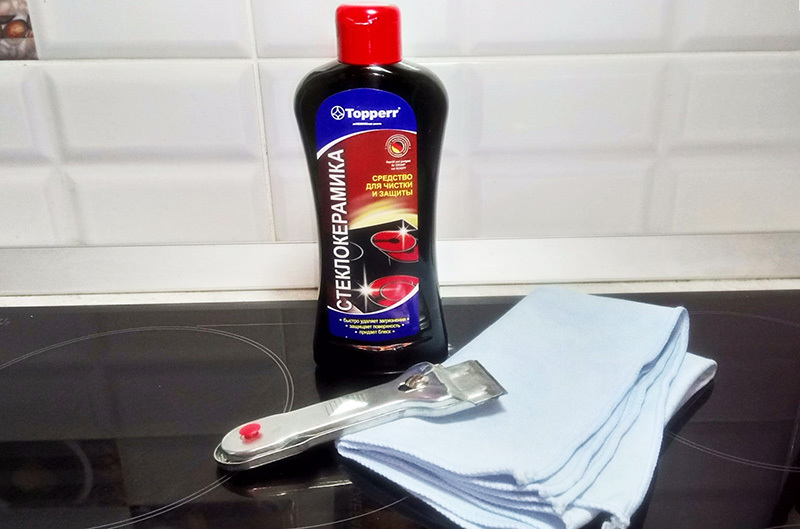What is the best electric hand planer? Since the tool is portable, consider its weight so that you could work with it most comfortably. Handheld wood planers can be cordless or corded. Powered by a battery, cordless devices can be used in areas without access to a power source. In these models, the runtime and charging time are the most important factors. That said, they are heavier than their corded analogs due to the battery weight. Corded portable wood planers are more powerful and reliable but have the downside of restricted mobility. Depending on the type of material you need to cut through, you should opt for models with carbide blades (for hardwood) or high-speed steel blades (for softwood). We believe that Makita Planer, 3-1 / 4 In, 7.5 A fits these criteria best.
Why have we chosen it? Made in Japan, this high-quality tool boasts the speed of 16,000 RPM. With the weight of a little more than 7 pounds, it has excellent maneuverability. A comfortable handle with a rubberized grip makes the unit even more convenient. This model comes with double-edge carbide blades, which will allow you to cut through the hardest wood. The powerful 7.5 AMP motor will help you complete the time-consuming tasks much faster.
Portable planers are a tough subject. And, it’s not because they’re a complex concept - far from it. It’s the fact that there’s really nothing to say about these that wasn’t said fifty years ago, and before that, nothing that wasn’t said millennia before that. Planers have been around for a very long time - at least 4,000 BCE by our discoveries, and probably a hell of a lot longer than that truth be told.
You may be wondering, why am I talking about them, then? If there’s little new to say, if it’s hard to really expound the topic, why bother? Well, the long and short of it is, they’re an important tool - there’s a reason they entered use in the bronze age, and remain to this day, with little change aside from the technological augmentation of the post-war progress curve.
We're going to talk about three such products of modern technology applying likely the last major changes that will ever be made to this age-old tool, and a modern rendition of the classic and basic tool as well, just for comparison.
Before we do that, though, let’s explore the history and the nature of these tools, and point out the importance of choosing a good tool, rather than cutting corners for the sake of saving a buck. If you’ve read some of my other pieces on planers (yes, there are actually several others, and at least one more forthcoming), then some of this will be old news. It will also be somewhat routine knowledge to experienced craftsmen, but this is important for truly appreciating planers as a whole.
You need to appreciate the nature of these tools when shopping for a modern version of them, lest you make poor choices.
CONTENT
- 1 TOP Electric Hand Planers
- 2 What Planers Are
- 3 A little history
- 4 Choosing Best Hand Planers: Importance Of Good Brands
- 5 10 Best Electric Hand Planers Comparison Table
TOP Electric Hand Planers
1. Makita Planer, 3-1 / 4 In | Best Electric Hand Planer
I’ve talked about this planer before, so it’s really hard to say much more about it than I already have, not because it’s not a fantastic tool - it absolutely is - but because I pretty much summed it up in entirety already. However, since many people may not have seen my other reviews on planers when finding this one (perfectly reasonable), I suppose this bears repeating.
I’ve made no attempts to hide my love for Makita tools in the past. A lot of people have sadly not heard of them because you really only find them in high-end environments due to their price. They’re not cheap - they’re one of the priciest brands out there actually. The thing is, they’re worth the price of admission though.
This power planer is a prime example of why you buy a higher-end brand, and save money in the long run, as we’ll be looking at a budget model next (which has its place... I suppose), and the difference really is night and day.
The trick is, you really only want something this costly if you do use it frequently, and you may not, if you’re anything like me. That’s what’s stopped me from having one.
Features
- Power: 7.5 A 110v corded electric.
- Braking: Trigger release. Stops on a dime.
- Type: Thickness / Layering planer.
- Adjustable: Yes.
- Weight: 10.75lbs.
- Noise: Moderate to low.
Performance
I have used an older version of this model before, briefly, and let me tell you, it does handle like butter. If you’ve spent much time using a traditional hand planer, which isn’t hard work but “tedious”, this is a serious transition and the speed and smoothness of it will really shock you.
Pros and Cons
Pros:
| Cons:
|
Conclusion
If you need a pro-quality planer, you’ve found it. That’s about all I have to say really.
Makita: Check the current price
2. Wen 6530 | Best Price Electric Planer
I've also talked about this one, twice before in fact. And at this juncture, I’m going to be completely honest. I don’t care for this one, for a host of reasons. It has its place I suppose, being somewhat alright for people who only occasionally need a planer, and just don’t want to pay triple digits for something they use so infrequently.
But WEN isn’t a hugely reputable company compared to Makita, Bosch or even Worx, and you have to watch it as a result. I can see this having a place as a backup planer in the unlikely event your Bosch or Makita planer breaks or needs servicing, but you have project deadlines to meet. I can see it being fine for the occasional use in a workshop where planers aren’t frequently used, and I could see it as a first tool for someone just getting into a hobby where you need these sorts of tools.
However, for heavy use in a serious hobbyist's workshop, or in a professional workshop? Just, no... you want something higher end. This is every bit a budget planer.
Features
- Power: 6 A 110v corded electric.
- Braking: Trigger release. Stops okay.
- Type: Thickness / Layering planer.
- Adjustable: Yes.
- Weight: ~ 7lbs
- Noise: Moderate to low. Motor makes a disconcerting noise.
Performance
This thing does the job alright, it’s everything else about it that bothers me. It feels cheap and fragile and “squishy”. The plastic feels subpar and corner-cutting, and the motor makes this awful hum that usually indicates imbalance or the imminent death knell of an electric motor, which just worries me the entire time it runs.
Pros and Cons
Pros:
| Cons:
|
Conclusion
For a first time user, as a backup, or for just occasional use it’s fine, but you can do better.
Wen: Check the current price
3. Bosch 12V Max Planer | Best Cordless Planer
Bosch isn’t a brand I’ve talked about much thus far in my tool reviews. This may lead you to expect me to not like Bosh, to have problems with their quality. However, while they’re not Makita or Black & Decker, that doesn’t mean Bosch tools are bad by any means.
This is really only one ladder rung below Makita in quality, for the most part. There are a few design choices I would’ve done differently, but they’re nitpicks, and not reflective of the quality of this planer in any real or significant way.
Bosch tools are of excellent build quality, and this planer is no exception to that fact, not even remotely. If you like Makita’s tools, but not their price, you can shave a decent little bit off with Bosch without forsaking much of the quality, for the most part. Their shelf life is a little less than Makita, they’re a bit noisier, and on a superficial level, they don’t look as slick, but if these are non-issues for you, don’t discount Bosch without trying one of their tools first.
Features
- Power: 12v Battery.
- Braking: Trigger release. Stops decently.
- Type: Thickness / Layering planer.
- Adjustable: Yes.
- Weight: ~ 7lbs
- Noise: Fairly quiet.
Performance
Like Makita, I’ve used an older take on this once, briefly, and it felt like butter. It’s not quite as smooth or slick as Makita, but the difference really isn’t that significant either. It’s a good compromise, and unlike the WEN, one I am comfortable recommending to even higher-end, experienced users, so there it is.
Pros and Cons
Pros:
| Cons:
|
Conclusion
If you like Makita but not its price, give this a go.
Bosch: Check the current price
4. GreatNeck C4 Bench-Jack Cutter | Best Cheap Electric Planer
This is not a power tool. On the contrary, this is a traditional planer of the sort that has been manufactured since, at the least, the 18th century. This technology hasn’t changed much in that time, and before that (when better metals, nicely-threaded screws and so on were developed), this is the planet concept that persisted for millennia.
Until very recently, this is all I really used, because as I said, I appreciated the sort of Zen sensibility of doing this slowly and by hand, and really, once you get some muscle memory for the shallow, gentle strokes, this is an easy tool to use.
It’s not even that hard of work, once you learn to work smart and not hard in general. However, it takes time, and it will take a toll on your joints and muscles over enough time, which is why I’ve begun to take the power planers much more seriously in recent times. Still, I’ve built tables and cabinets and arcade machines using one of these puppies, so if you have patience, you can get anything done with this ancient but powerful tool.
Features
- Power: You are the power.
- Braking: Let go of it.
- Type: Thickness / Layering planer.
- Adjustable: Yes.
- Weight: N / A - negligible.
- Noise: It doesn’t make much of a noise, there’s no motor.
Performance
Let’s make one thing very clear - this is a tool that will take time to achieve larger-scope projects with. A power planer is crazy fast, where this is just patience and dedication. But, it’s an affordable solution, and while not much cheaper than the WEN power planer, there’s nothing on this that can really break.
Pros and Cons
Pros:
| Cons:
|
Conclusion
I think every woodworker should spend time using one of these, if for no other reason than to appreciate a good power planer down the line.
GreatNeck: Check the current price
What Planers Are
Planers, at least the original and current most basic model, are a simple tool with one of two simple goals. Either they remove layers of wood, or they cut joints into wood, depending on which version. To further complicate this, jointing can mean a couple things. It can mean establishing a flat standard for a piece of wood, which helps a thickness planer in working straight, but also can mean cutting furrows for joining pieces of wood together. Planers, depending on the blade, can do either.
At its heart, a planer has a blade at an angle, and there are two hand grips for solid, directed motion. Power planers have reciprocating motion or directed vibration to aid in this, and remove the sawing motion.
These are used to cut joints, flat standards, adjust the thickness of pieces of wood, and to design solidly flat surfaces (with the aid of additional sanding).
A little history
Planers, like I’ve said a few times, are an ancient tool, truly. We have records and evidence of the basic implementation of this tool dating back as far as 4,000 BCE. They most likely existed long before then, likely shortly after we first figured out how to smelt and forge metal on a fundamental level. They answered a problem - the imprecise and sometimes dangerous act of chiseling wood with a hammer. When the chisel blade was surrounded by wood or metal framing, it became possible to use it without the hammer in more precise and calculated strokes in many cases. In others, even when a mallet or hammer was involved, it was easier to achieve the shallower results intended.
This didn’t change much, aside from better materials and overall craftsmanship, until we invented electric motors. This resulted in electric hand planers and stationary industrial ones, and that’s about the last significant innovation likely to happen to these for another six millennia or so.
Choosing Best Hand Planers: Importance Of Good Brands
There’s a sometimes accurate, sometimes erroneous sentiment that when you pay more for a high-end brand of something, you’re paying almost entirely for a label. That can be true with clothes, with food, with some other goods. When it comes to tools, though, you really do get what you pay for.
You can cut corners and buy a cheaper hand planer, but the result will be your spending more money in the long run when the thing either doesn’t work to your desired level of efficacy and precision. It'll also probably break if subjected to industrial levels of ongoing usage.
If you purchase a higher-end brand, you’re getting several benefits. First, of course, is the build quality and precision. More effort, time and high-end resources are put into a costlier brand, resulting in a better-working machine which provides a better overall experience. This also makes it a much more durable and long-lasting device if you intend for it to be put through consistent, heavy, long use.
On top of this, these higher-end brands are much more confident in their own quality, which means they work with retailers, online or offline, to provide solid warranties. Don’t underestimate the importance of a good warranty, because there will come a time when you need to fall back on it, because even the best made things can break by accident sometimes.
So, you can shave a few bucks off and cut corners, and kind of pray that things line up for you, or you can bite the proverbial bullet and just pay an upfront cost you know you won’t be having to increase as parts consistently break and things persistently fail. The choice is yours, but the wise choice should be pretty obvious.
Where I usually have volumes of experience with tools I discuss, some mild stubbornness on my part has led to me not having used power planers that much. I actually liked the Zen and patience of using a traditional hand tool on my projects, I felt it made me appreciate the work I did more, and if I may be Buddhist for a moment, it also kind of felt like I was imprinting a bit of my soul on it as a result.
Well, I’m not getting any younger, and that’s taking a toll on my joints now. So, I'm starting to cultivate an appreciation for these power tools.
10 Best Electric Hand Planers Comparison Table
1
Makita
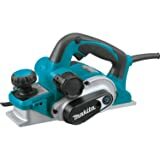
Makita KP0810 3-1 / 4 "Planer
2
WEN
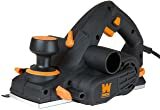
WEN 6530 6-Amp Electric Hand Planer, 3-1 / 4-Inch
3
Bosch
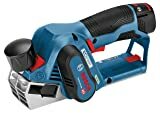
Bosch 12V Max Planer (Bare Tool) GHO12V-08N
4
Great neck
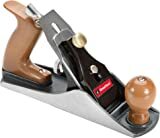
GreatNeck C4 Bench-Jack Plane | 9 Inch Plane, 2 Inch Cutter | Flattens or Reduces Wood Thickness | Useful Woodworking Tool | Adjustable to Control the Depth of Cut | Cast Iron Body & Wood Handles
5
DEWALT
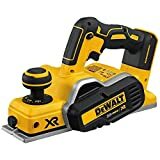
DEWALT DCP580B 20V MAX Brushless Planer (Tool Only)
6
Ryobi

Ryobi HPL52K 6 Amp 16,500 RPM 3 1/4 "Corded Hand Planer w / Kickstand and Dual Dust Ports
7
Makita
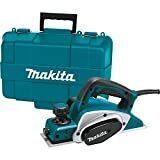
Makita KP0800K 3-1 / 4-Inch Planer Kit
8
BOSCH
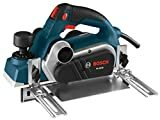
Bosch 3-1 / 4 Inch Woodworking Hand Planer with Carrying Case, PL2632K
9
VonHaus
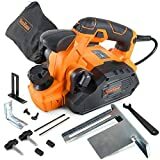
VonHaus 7.5 Amp Electric Wood Hand Planer Kit with 3-1 / 4 "Planing Width and Extra Set of Planer Replacement Wood Blades - Electric Door Planer
10
Goplus
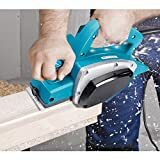
Goplus Electric Wood Hand Planer, 3-1 / 4-Inch 1000W 16,000Rpm Power Planer Hand Held, Woodworking Electric Door Planer

